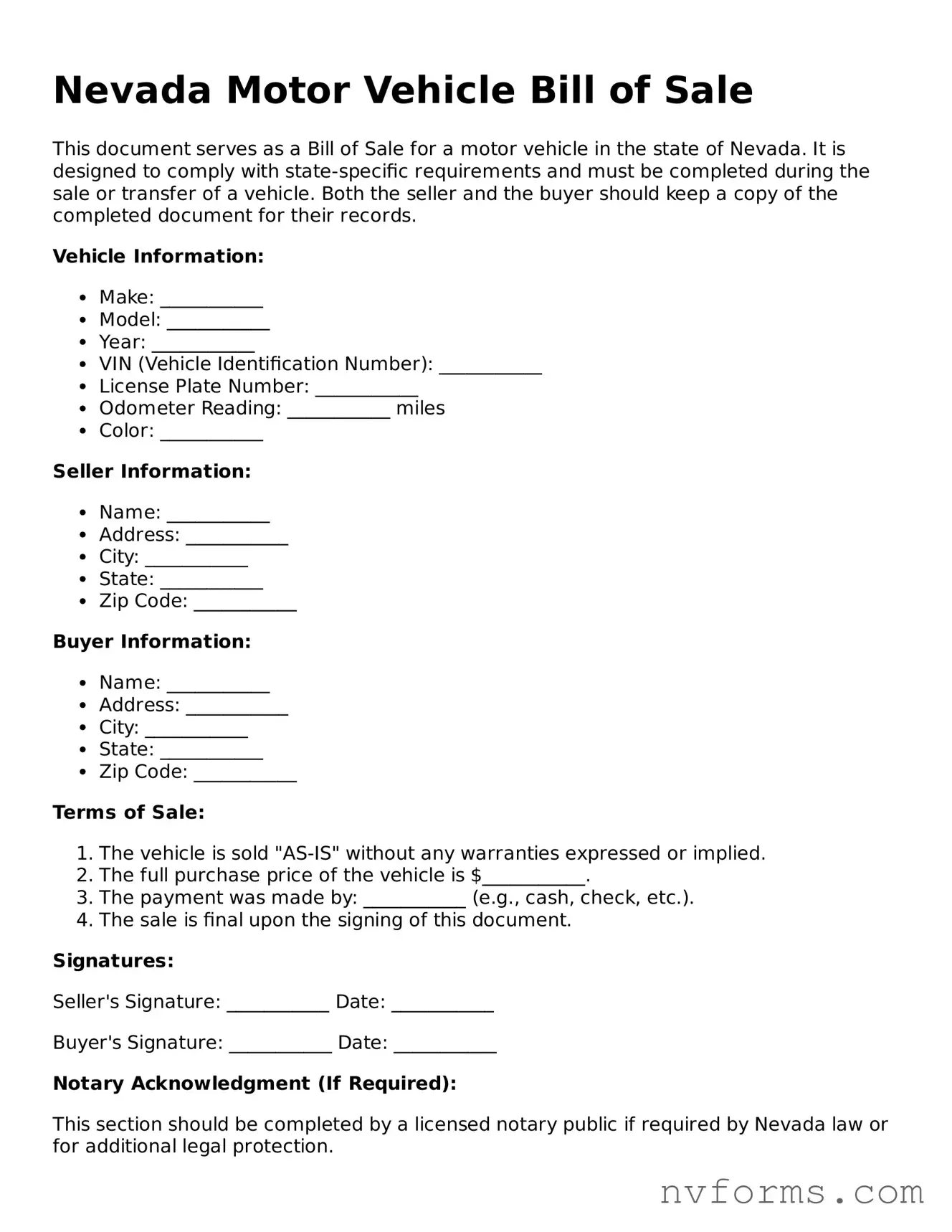Nevada Motor Vehicle Bill of Sale
This document serves as a Bill of Sale for a motor vehicle in the state of Nevada. It is designed to comply with state-specific requirements and must be completed during the sale or transfer of a vehicle. Both the seller and the buyer should keep a copy of the completed document for their records.
Vehicle Information:
- Make: ___________
- Model: ___________
- Year: ___________
- VIN (Vehicle Identification Number): ___________
- License Plate Number: ___________
- Odometer Reading: ___________ miles
- Color: ___________
Seller Information:
- Name: ___________
- Address: ___________
- City: ___________
- State: ___________
- Zip Code: ___________
Buyer Information:
- Name: ___________
- Address: ___________
- City: ___________
- State: ___________
- Zip Code: ___________
Terms of Sale:
- The vehicle is sold "AS-IS" without any warranties expressed or implied.
- The full purchase price of the vehicle is $___________.
- The payment was made by: ___________ (e.g., cash, check, etc.).
- The sale is final upon the signing of this document.
Signatures:
Seller's Signature: ___________ Date: ___________
Buyer's Signature: ___________ Date: ___________
Notary Acknowledgment (If Required):
This section should be completed by a licensed notary public if required by Nevada law or for additional legal protection.
Notary Public's Name: ___________
Seal and Signature: ___________ Date: ___________
